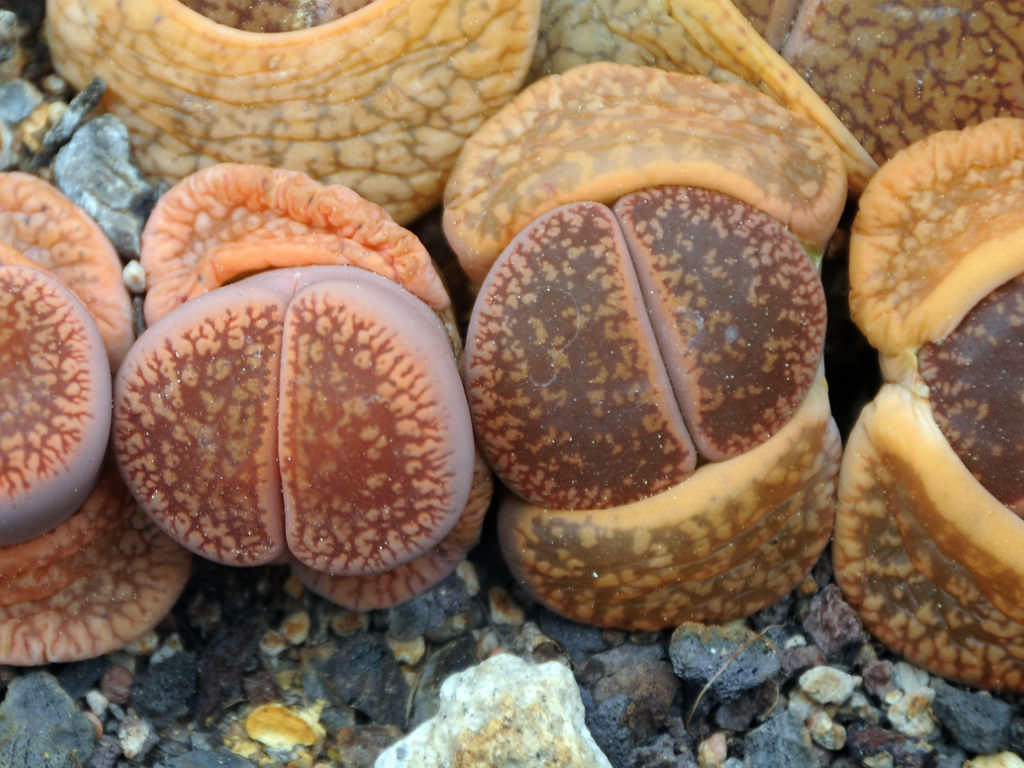Lithops aucampiae mix - 20 seeds



Lithops aucampiae mix - 20 seeds
C255 C256 C257 C298 C334 C366
1. Sterilize substrate (3+ minutes in microwave or 50 mins in oven- (350°F) and let it cool)
2. Mesembs (Lithops, Conophytums...) require a well draining soil, which means it dries out quickly. Soil should contain a lot of pumice, perlite or sand. Sand should consist of many sizes of particles, from dust to 1/8”. The basic soil mix is 1 soil mix to 3 pumice and sand. Remove any big chunks (peat) from the potting soil.
3. Planters should be about 1-1.5 inches deep. Fill a container with good draining soil. Leave 1/2 inches to the top free. Press the substrate, equally.
4. Disperse pebbles granulated up to 0.2 inches
5. You can sow 50 -100 seeds into one planter 3x3 inches. Mesemb seeds are very tiny.
6. Equally Water the substrate with water (boil and then let it cool) - place a piece of a napkin on top of the substrate and slowly pour the water over it.
7. Let the container soak up water for 5 minutes. Leave the container to drain out the water surplus.
8. Mix some fine sand to the bag with seeds, and sprinkle contents of the bag onto the substrate and pebbles. Do not cover with too much soil or the seeds may not germinate.
9. Put the whole container into a zip bag to keep humidity.
10. Avoid exposing to direct sunlight, but provide them light on some bright place, temperature should be about 77°F.
11. The germination process usually starts within 4-7 days but some seeds can germinate after month or two. Don't expect all the seed to germinate at the same time.
12. Start opening the container gradually so that the seedlings can get used to the new air conditions. Remove bag completely after a month.
13. Seedlings need some moisture, substrate shouldn’t be dry, but don’t overwater. and they need an ample amount of light – but not direct sunlight! you need to take care of them constantly next 3-5 months.
14. Repot them when you notice that seedlings are space-limited, which is usually in a year.
15. Buy only seeds from reputable sources like www.rareplant.me. That way you will avoid scams, fake or bad seeds, and you will always get fresh ones.
- These succulents seeds are tiny but require minimal care and do not require frequent watering
- Recently harvested
- Top quality
Shipping:
- Posted via registered airmail - processed within 48 hours, usually 24h.
Once you get a handle on the basic requirements, growing them will quickly become an obsession.
Lithops grow well in shallow containers in a controlled climate environment such as a greenhouse.
The annual cycle of a lithops begins in late spring, when in response to moisture the existing leaf pair starts to increase in size. Depending on species, at some time between July and December in the northern hemisphere, a single flower bud will force its way through the fissure and open to a daisy-like flower that can be as large as the plant body and lasts for about a fortnight.
Lithops require a very bright and sunny position at all times, but during particularly warm summer periods this must be accompanied by good ventilation to prevent scorching. In common with most succulent plants, the stomata only open at night to allow absorption of carbon dioxide. This normally occurs below about 18oC, therefore also maintain plenty of ventilation at night during warm weather. In the wild, some species experience frost for short periods. However, in cultivation it is safer to keep them frost-free and most growers try to maintain a minimum temperature of 4 - 5oC in their greenhouses.
The summer watering is started when the new leaves are well developed and the old leaves more or less dried up; in United Kingdom greenhouses this tends be sometime during May. Pots are allowed almost to dry out before the next watering and the process is continued until October. During high summer, watering will usually be required at least once per week. Pots are kept completely dry through the winter until the next May, but growers in warmer climates such as California sometimes need to give a very small amount of water during this period. Occasional feeding with a low-nitrogen liquid fertiliser during the growing season is advantageous.
Lithops prefer a soil mixture that is made up of sandy gravel (e.g. 2 parts sand: 1 part clay loam: 1 part gravel). Add bone meal (phosphorus, like powdered dried chicken bones) and dolomitic lime (calcium, magnesium)
